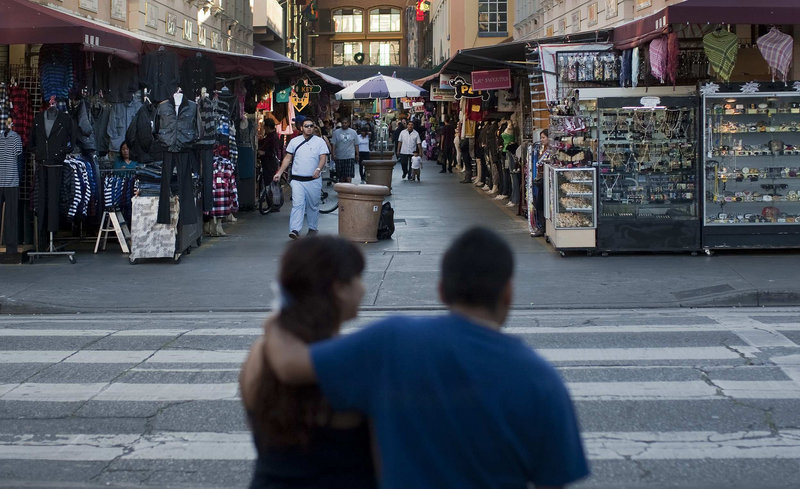LOS ANGELES – Mirabelle Vargas, 29, winds her way through the open-air stalls in bustling Santee Alley, hunting for Victoria’s Secret underwear.
Or at least undies with a tag that says Victoria’s Secret.
An authentic pair from the lingerie maker can cost $7.50 and up. But Vargas, a retail sales clerk, managed to find a table brimming with pink-and-white unmentionables. Price: two bucks a pop.
“Of course they’re not real, not at this price,” said Vargas, decked out in a chocolate-brown Victoria’s Secret tracksuit, also counterfeit. “But the quality isn’t bad, and buying fakes saves a few bucks. You can find fake everything here.”
Not that long ago, counterfeiters focused almost exclusively on upscale brands like Prada and Gucci. But five years of a weak economy has knockoff artists churning out goods for people with more modest tastes and budgets.
At downtown Los Angeles’ Santee Alley and other locations, you can find fake versions of shirts, pants and footwear by brands such as Gap, Dickies and Vans.
“You are seeing stuff now you can find at Target, not just stuff you can find at Macy’s and Neiman Marcus,” said Lt. Mathew St. Pierre of the LAPD’s commercial crimes division. “Five years ago, we wouldn’t have seen $10 and $15 T-shirts being counterfeited like we do now.”
St. Pierre said police are aware counterfeits are being sold at Santee Alley and investigate regularly, but he added that combating knockoff artists is a constant battle fought with limited resources.
No one keeps numbers, but fashion industry experts say cheap fakes have exploded in recent years, especially in California.
“It’s a huge problem because we are inexpensive fashion brands,” said Ilse Metchek, president of the California Fashion Association. “We are not Calvin Klein or Donna Karan. We are fast fashion. You can copy it within a week of appearance in retail stores and slap a label on it.”
The economy is one reason for the trend. “The recession has more people trading down,” said Susan Scafidi, academic director of the Fashion Law Institute at Fordham University’s law school. “Even lower-priced brands feel like a stretch in this economy, and people are more likely to trade down to counterfeits.”
There are several other factors driving the low-rent counterfeit trend, including the Internet, a changing consumer mind-set and beefed-up anti-counterfeiting efforts by the giant apparel companies.
The big luxury brands have cracked down hard.
Last year, fashion label Tory Burch won $164 million in a lawsuit against a group of cyber squatters peddling fake shoes, purses and accessories. Chanel filed suit in September against 399 websites allegedly selling knockoff sunglasses, wallets, jewelry and other goods bearing the luxury retailer’s name.
But with slim budgets and few employees, small brands can’t afford legions of lawyers and private detectives, making them less-risky targets for counterfeiters.
“It’s a business-expansion strategy for the bad guys,” said Tom Taylor, president of brand protection for OpSec Security, a Boston firm that monitors counterfeiters. “The downturn left a lot of capacity open in factories in China and other parts of Asia, so they are coming up with ways to fill that capacity.”
Send questions/comments to the editors.



Success. Please wait for the page to reload. If the page does not reload within 5 seconds, please refresh the page.
Enter your email and password to access comments.
Hi, to comment on stories you must . This profile is in addition to your subscription and website login.
Already have a commenting profile? .
Invalid username/password.
Please check your email to confirm and complete your registration.
Only subscribers are eligible to post comments. Please subscribe or login first for digital access. Here’s why.
Use the form below to reset your password. When you've submitted your account email, we will send an email with a reset code.